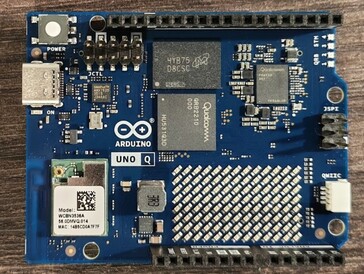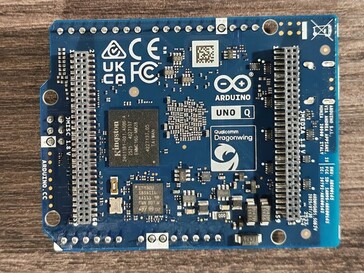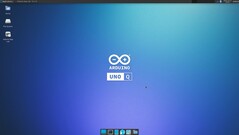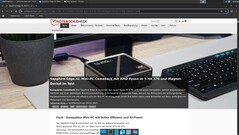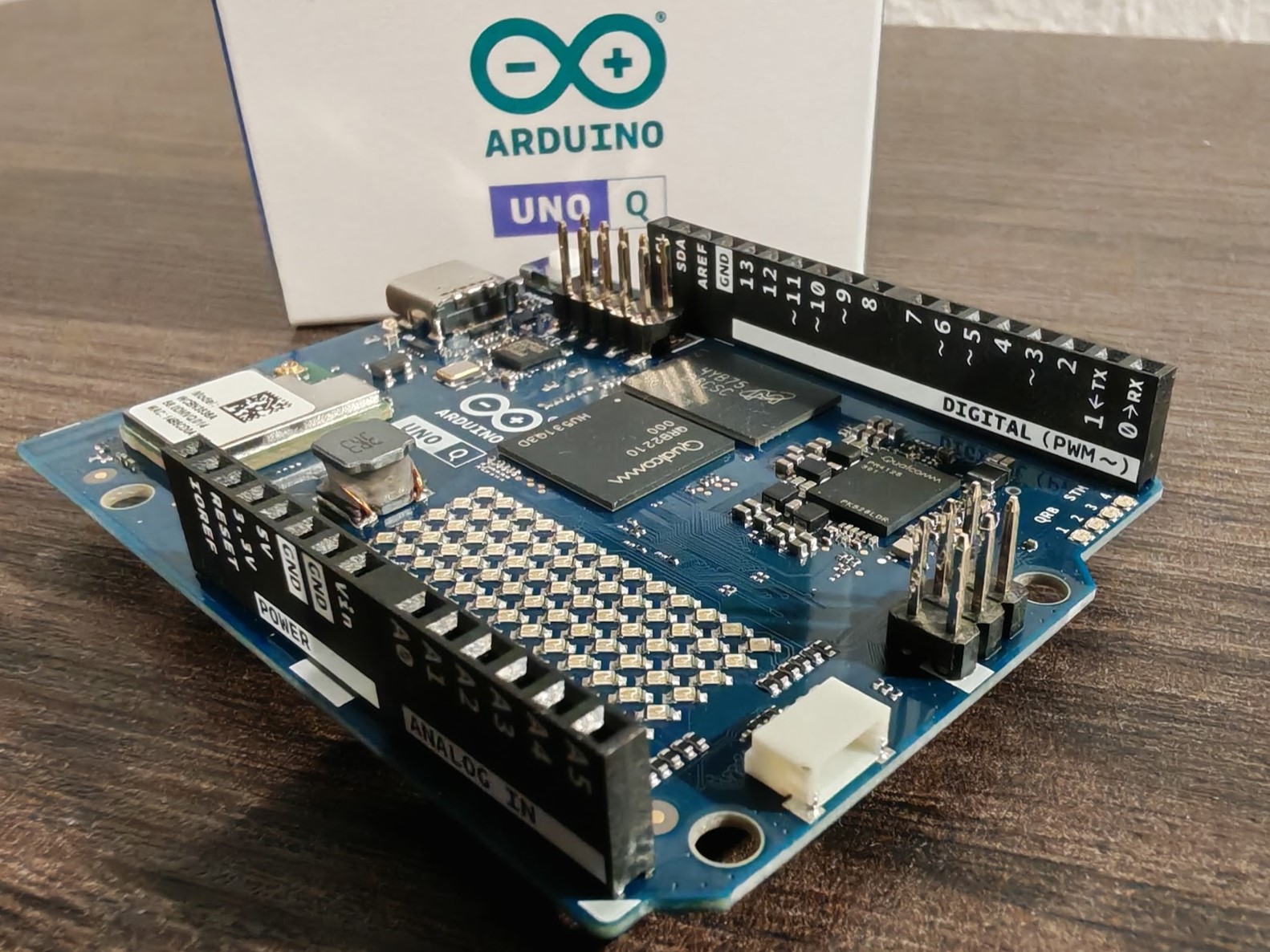
Arduino UNO Q hands-on: Smarter with Qualcomm and capable of running a desktop OS like a Raspberry Pi
The thinker.
We got a first look at the Arduino UNO Q, marking the first time Arduino has released a board that supports a full desktop operating system, allowing it to function as a compact PC. The board can also run AI models locally, giving beginners a smooth entry point into AI development within a familiar ecosystem.Silvio Werner, ✓ (translated by DeepL / Ninh Duy) Published 🇩🇪
The UNO Q is interesting and versatile
The UNO Q is a noteworthy addition to Arduino’s lineup, offering plenty of possibilities for beginners. While it doesn’t fully match the capabilities of a Raspberry Pi, it can serve as a reasonable alternative. Its feature set is broad, giving professional users another tool for retrofitting, product development, and quick feasibility testing.
Pros
Cons
Price and availability
In the EU, the Arduino UNO Q is available from various retailers for about €46 (approx. $53). Depending on your project, it may be worthwhile to opt for a kit that includes additional sensors.
The Arduino UNO Q is a single-board computer built around a Qualcomm SoC and can function both as a developer board and as a desktop system. It supports a wide range of sensors and actuators, and it also allows the local execution of AI models.
Specifications
| SoC | Qualcomm Dragonwing QRB2210 |
| MCU | ST STM32U585 |
| Operating system | Debian OS, Zephyr OS |
| Internal storage | 16, 32 gigabyte eMMC memory |
| Memory | 2, 4 GByte LPDDR4X |
| Wireless connection | WiFi 5, Bluetooth 5.1 |
| USB | USB Type C 3.1 with DisplayPort support, USB Power Delivery |
| I/O | Multiple GPIO pins; optional 5 V power input |
| LEDs | Two RGB LEDs, 8 x 13 LED matrix |
The Arduino UNO Q in the market lanscape
Before describing the Arduino UNO Q itself, it is useful to place it within its broader context, especially since the definitions of certain terms are still evolving. The Arduino UNO Q is both a single-board computer and a developer board. A developer board typically lacks the performance needed to run a full desktop operating system and is instead designed for tasks such as connecting sensors, processing data (for example, from a temperature probe), and controlling actuators like fans.
A single-board computer, by contrast, can run a desktop operating system. Similar to the Raspberry Pi 5 (in price comparison), the Arduino UNO Q fits into both categories. It can be used with a keyboard, mouse, and Linux environment, or it can operate as a compact control module that, for instance, reads data from a vibration sensor and transmits it via Wi-Fi. It can also be used solely with the onboard MCU. Measuring 53.34 × 68.58 millimeters, the UNO Q is noticeably smaller and slimmer, in part because it omits features like Ethernet.
After the Raspberry Pi Foundation ventured into Arduino territory with the Raspberry Pi Pico, Arduino is now stepping into Raspberry Pi’s domain. Following Arduino’s acquisition by Qualcomm, the company is emphasizing the UNO Q’s AI capabilities. This does not necessarily refer to running large language models, but rather tasks such as image recognition using pre-trained models.
Use with a Linux desktop is possible, but far from enjoyable
The Arduino UNO Q can be accessed via USB-C. With a USB hub, you can connect a display, power the board, and use a keyboard and mouse. Peripherals such as a USB camera or microphone can also be attached. The single USB port helps keep the board small and is perfectly fine for embedded applications, but it means a hub is mandatory for any desktop setup.
The system runs Debian with the lightweight XFCE interface. In the 2 GB RAM configuration we tested, it becomes clear very quickly that Linux is usable but sluggish. Basic tasks work, but media playback is practically impossible, and the UNO Q is not suited for use as a real desktop PC.
Arduino App Lab comes preinstalled and updates over Wi-Fi after initial setup. It allows you to create applications that leverage both the Qualcomm SoC and the onboard MCU. The included examples illustrate this well: the board offers relatively high computing power for a developer platform, enabling local AI workloads. Pre-trained models for tasks such as image recognition are supported, expanding the capabilities of a traditional developer board to include neural-network-based applications.
Why all this?
The purpose of the Arduino UNO Q, especially from an end-user perspective, is best explained through a practical example, even though the device is not primarily targeted at typical consumers. Imagine a small company that has partially automated the movement of goods from a packaging machine to the logistics area. Currently, an employee visually checks whether each product is properly packaged and labeled. The Arduino UNO Q could be used, at least as part of a feasibility study, to automate this quality control.
Using a USB camera, the UNO Q can capture images of products on the conveyor belt and detect packaging errors. If an error is found, it can log the event in a database for statistical tracking and notify an employee. A further step is even feasible: the UNO Q could trigger an actuator to automatically push defective products off the conveyor belt.
While this type of task sounds complex and is not trivial to implement, the UNO Q offers two key advantages. First, the Arduino ecosystem is large, widely adopted, thoroughly documented, and long-established. Chances are high that similar projects already exist and may even be publicly documented. Second, and more subjectively, the board supports Edge Impulse , a platform that simplifies the creation of custom edge-AI models. In this example, a model could be trained on images of correct and faulty packaging and then deployed locally on the UNO Q with minimal effort. Running neural networks locally also has advantages, such as maintaining confidentiality, avoiding reliance on external service providers, and operating without a stable internet connection. However, this is not a unique selling point; TensorFlow Lite, for example, can also be used on Raspberry Pi boards.
The Arduino App Lab examples are also worth mentioning. They introduce users to the block-based workflow and allow easy customization. Many examples demonstrate how results from image recognition can be displayed through a smartphone’s web interface. The UNO Q can also function as a traditional developer board via Arduino IDE 2.0+, in which case only the MCU is programmed rather than the Qualcomm APU. A more practical use case for the MCU alone might be an irrigation system using moisture sensors and pumps. Pre-trained models can also be useful for tasks such as image analysis or basic speech recognition. Overall, the included examples should be viewed as guidance and inspiration for implementing your own projects.
Transparency
The selection of devices to be reviewed is made by our editorial team. The test sample was given to the author by the manufacturer free of charge for the purposes of review. There was no third-party influence on this review, nor did the manufacturer receive a copy of this review before publication. There was no obligation to publish this review. As an independent media company, Notebookcheck is not subjected to the authority of manufacturers, retailers or publishers.





